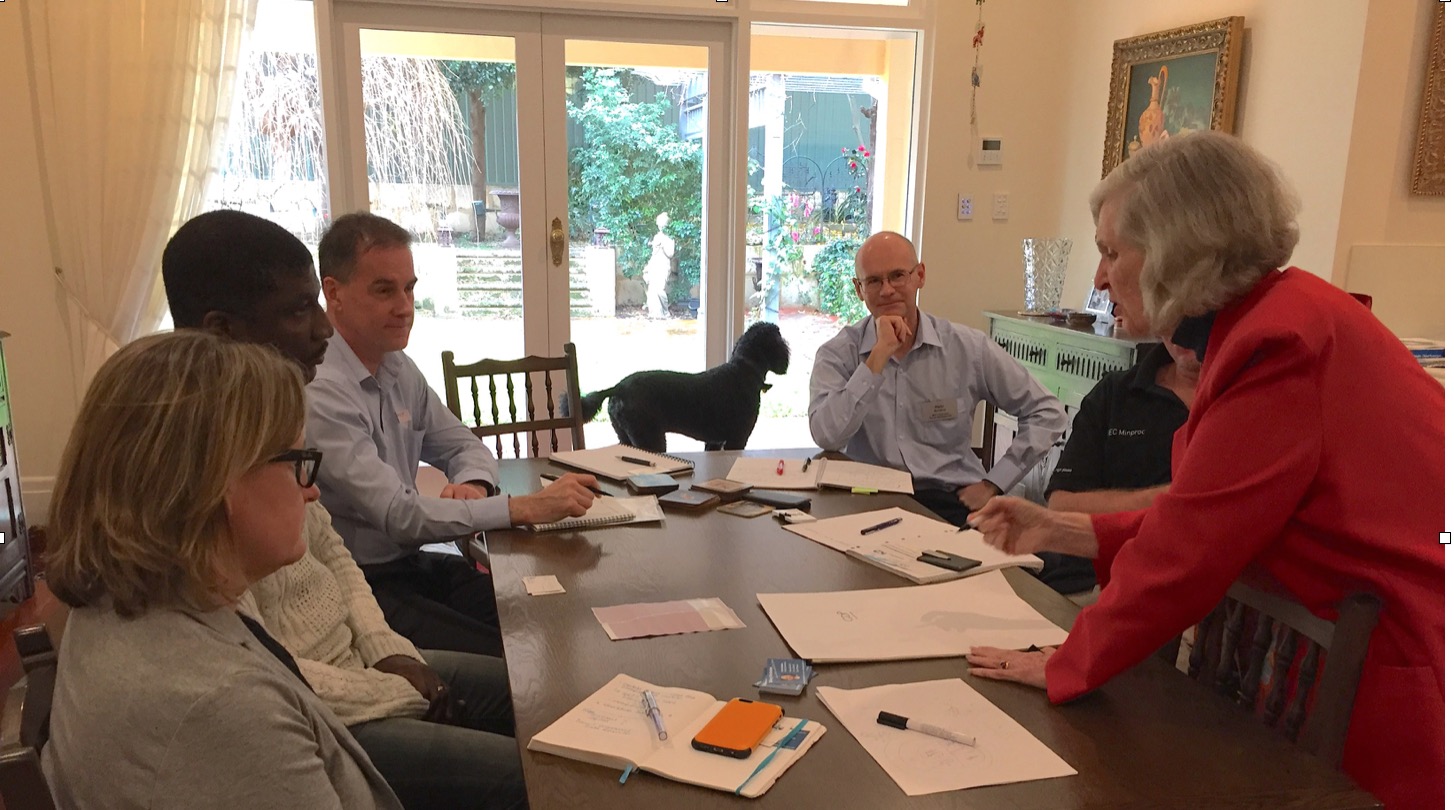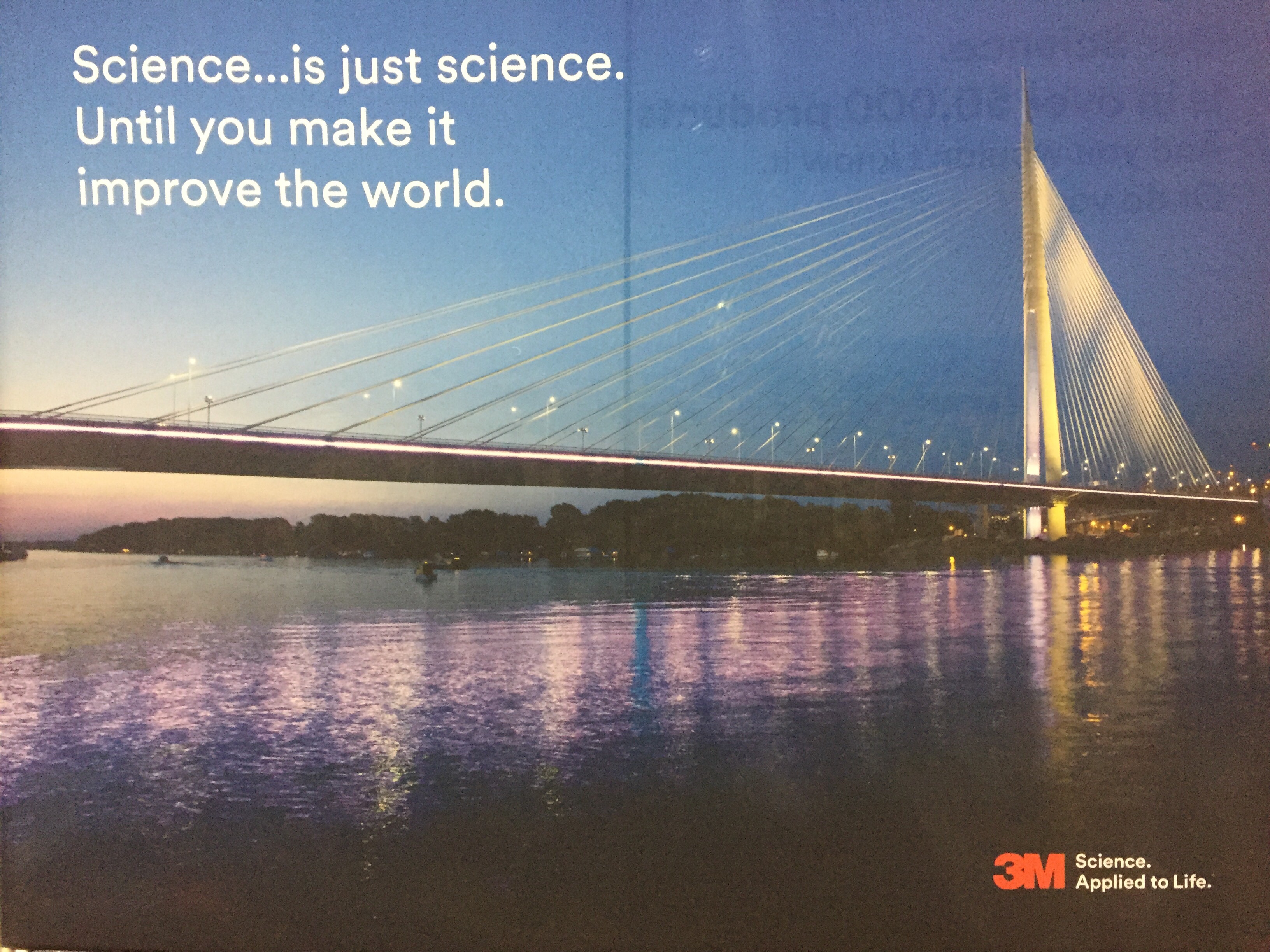Sophie Wallis, Upthink, and member of the Perth City Chapter, believes that nudge theory (or behavioural insights) can help to address some of the natural cognitive biases (as introduced in the last two posts) and thus to improve infrastructure decision making. In this post she looks at a study of project delivery in the UK’s Department for Transport (DfT), carried out by the Behavioural Insights Team (which Nobel Prize winner, Richard Thaler and others helped to set up).
 Cognitive biases are hard for us to notice, even if we’re aware of them. It’s taken painstaking research to uncover the ones we have, and we’ve only just started to realise some of their implications.
Cognitive biases are hard for us to notice, even if we’re aware of them. It’s taken painstaking research to uncover the ones we have, and we’ve only just started to realise some of their implications.
The BIT chose to focus on 3 key cognitive biases that could impact DfT’s major projects. Interviews with key personnel indicated where these biases were impacting decisions, whether biases were built into their systems and processes – and what could be done to correct them.
The three biases BIT studied were:
Planning Fallacy – We’re wired to assume things will turn out well, that we are more than capable of reaching our goals, and less likely to fail than others are. For major projects, BIT found this led to consistent overestimation of success and under-estimation of cost and time requirements, particularly during the project planning phase.
Groupthink. Strong group dynamics are great for project teams, but we must be wary of the tendency to be influenced by others in our group and the impact this can have on decisions. Have you every been in a group where an ‘outsider’s’ view was shut down and discounted? That might be groupthink at play, and it can tend towards non-contentious ‘middle ground’ decisions rather than the ‘best’ decision. Have you been in a team where it felt safe to raise alternative ideas, and leaders encouraged this? What was different?
Sunk cost fallacy. Stopping a project mid-delivery is a fairly unpalatable option – a ‘courageous decision, Minister’. But when we make decisions based on the money and time already spent, rather than on the suite of potential outcomes, we fall into the sunk cost fallacy trap. BIT suggests a simple tool like a decision-tree can help to break the ‘escalation of commitment’ in large projects.
Question: Are these cognitive biases affecting decisions in your organisation? One elegantly simply tool suggested by BIT is the ‘pre-mortum’. Imagine the project has been completed, but went really badly – what went wrong?
Have you tried this? Did it provide insight? What other solutions might also prove effective?

Aim for the Fly A.Currell/ Flickr
Nudge theory was originally used to make small but consistent changes in user behaviour over a period of time to create better personal and community outcomes. In the last post we mentioned the case of organ donation but perhaps the most famous example is the ‘urinal fly’ introduced at the Amsterdam airport – a fly painted on the men’s urinal, encouraging better aim (or more attention!) which had the effect of reducing spillage by 80% and cleaning costs by 8%. It was results like these that led to governments around the world setting up ‘nudge units’ to see what other applications were possible. But the focus was on consumer behaviour. They looked to see how others could be nudged, but what about nudging ourselves – the decision makers?
Can we be nudged to make better decisions? Joe Arvai, Professor of Sustainable Enterprise at the University of Michigan, says “ governments have made important strides when it comes to using behavioral science to nudge their constituents into better choices. Yet, the same governments have done little to improve their own decision-making processes. Consider big missteps like the Flint water crisis. How could officials in Michigan decide to place an essential service – safe water – and almost 100,000 people at risk in order to save US$100 per day for three months? No defensible decision-making process should have allowed this call to be made”. (my emphasis) His article in The Conversation is worth reading.
User decisions, such as choosing a default option, or aiming at a fly, are pretty simple. Infrastructure decisions, by contrast, are not. Joe Arvai refers to nudges as as ‘passive decision support’ because they don’t require a lot of effort on the part of the decision maker. “They are about exploiting – not correcting – the judgmental biases that people bring with them to all manner of decisions, large and small”.
Which lead us to ask: What cognitive biases affect our ability to make sound infrastructure decisions? And how can we use behavioural economics (of which nudge theory is but a part) to improve our choices? This is what we will look at in the next few posts.
Nudge theory is currently in the news and the next few posts examine aspects of it that are relevant to infrastructure decision making. Have you had any experience with ‘nudging’? What are your thoughts on the subject?

Back in the day!
In 2010 Richard Thaler (the 2017 Nobel Economics Prize winner) and his co-author, Cass Sunstein, wrote “Nudge Theory”. The idea behind nudge theory is that the brain is lazy, or rather that we have so many decisions to make every day, that where there is an easy way out, we are likely to take it. Governments around the world have established ‘nudge’ units to figure out how to encourage (yet not force) people to take decisions that are in their, or the community, interest. The most popular of the approaches is to make the beneficial decision the ‘default’ option. For example, making organ donation the default standard but allowing people to opt out, generates significantly highly numbers of organ donors than where the default is out, but people are allowed to ‘opt in’. This relies on us defaulting to the ‘easy option’, the one that requires the least effort, the least thought.
When it comes to infrastructure decision making, this means that we are more likely to choose options with which we are familiar, rather than ones that require effort, exploration, thought, and time. In other words, although we know that the world is rapidly and radically changing with technology providing far more options than we have had in the past, we will (being human) have a tendency to default to the infrastructure that we have built in the past. This means that we have an inbuilt tendency to construct infrastructure better suited to the 20th, rather than the 21st, century.
Question: How can we use nudge theory to work in our favour, rather than against?
Hein Aucamp, Perth City Chapter, submitted this as a comment to the last post but I think it contains ideas that are important enough to warrant a post of its own. Hope you all agree. Penny
 Silo! We use this word to indicate a situation in which efficiency and conclusions are impaired because cloistering prevents us from including all the required factors.
Silo! We use this word to indicate a situation in which efficiency and conclusions are impaired because cloistering prevents us from including all the required factors.
If you stand at the top of a silo and look down inside, you see a tiny horizon, much smaller than the surrounding landscape.
Our manner of talking – our language and choice of vocabulary – can be revealing about our perspective. It can show how much we can see and how many relevant factors we are taking into account.
I remember being at an AIFMG training course in 2012. There was a discussion about whether a road is really an asset. From a Local Government’s point of view, why isn’t a road considered a liability? After all, it requires effort and expenditure, it must be maintained, and it must be replaced. Should it really be called an asset?
But from a wider perspective a useful road is definitely an asset. We can easily see this, because when it is consumed, the community wants another one. Of course an asset has associated costs; that in itself does not make it a liability. What makes it an asset is that its benefits outweigh the costs.
Now look at the dangers of the silo effect in the discussion about the road. From the limited perspective of the asset custodian it would be much easier to entertain the notion that a road is a liability. The custodian bears the burden of the effort and records the expenditure. But when we extend our horizon to include all the relevant factors and actors, we see that it is an asset.
The comparison between road and rail in the last post is an interesting case study. May I venture to say that it is always possible, by drawing a small enough perimeter, to decide that any piece of infrastructure is a liability? The perspective just needs to be small enough to exclude the funding mechanism and the benefits to the end users.
In the road vs rail example mentioned, the economist unconsciously placed a circle of reasoning around both road and rail. In the road circle, he discovered a satisfactory funding mechanism; in the rail circle, he did not. So he reached his conclusion because he was looking for local net benefits. If on the other hand he had used a horizon instead of a silo, he would have been looking for system-wide benefits.
(Admittedly, it is much harder to comprehend funding mechanisms and benefits that are outside your silo even if inside your horizon.)
Hein Aucamp hein.aucamp@waiam.com.au
 A senior economist in a State Treasury once claimed that Rail was a net cost since costs exceeded revenues. Roads, on the other hand, he said, were profit producing. I smiled and thought he was joking, but he wasn’t.
A senior economist in a State Treasury once claimed that Rail was a net cost since costs exceeded revenues. Roads, on the other hand, he said, were profit producing. I smiled and thought he was joking, but he wasn’t.
The motor vehicle licensing board was embedded within the highways department and the sum total of licence revenues, he said, exceeded road costs. Ergo, roads were profit producing. (I suspect that capital costs didn’t figure in his equation)
On this reasoning, he resisted extending the capacity of rail, despite the fact that the city roadways were excessively congested with little scope to increase road capacity and that road users benefitted when traffic was diverted to rail.
I was reminded of this when I read Milos’ comment on my earlier post “Infrastructure – damned by the language we use”. He referred to language supporting silos. And indeed it does. However, if our infrastructure decisions are to be used to support community wellbeing do we not need to move beyond silos, to take a wider, more holistic, viewpoint?
Thoughts?

The only way to get perspective is to stand back and see the big picture, to see individual problems in context, and our own problems in relation to others, as well as to history. Two states that chose to see the infrastructure challenges of their councils in such a context were Victoria and South Australia and they have led Australia in asset management activity and improvement.
Victoria
In 1997 the State department responsible for local government was faced with a problem. Three years earlier, rates had been cut by 20% and rate capping introduced. Many councils were petitioning to have the cap lifted to cope with growth and, especially, to renew ageing infrastructure. State Government officers were in a dilemma. Whilst they could recognise the need for renewal, they suspected some councils were ‘gaming’ the system – using the excuse of renewal to avoid reducing costs. They decided to go out to tender for a simple model that could tell them which councils really needed an increase, and if so, how much. Three of the largest consulting companies in Australia at the time said that they could produce such a model, but the State chose to go with a smaller concern that pointed out that the information needed for such a model to work – namely a knowledge of the age, economic life distribution, and estimated replacement cost of council asset portfolios – was simply not available. They proposed to fill this gap. Councils also needed this information to manage their assets more effectively. The result was the report ‘Facing the Renewal Challenge’ (1998, published 2000) which led and underpinned council asset management activities and State Government monitoring for over ten years.
South Australia
In the meantime, a group of large councils in South Australia who were trying to benchmark were frustrated by the lack of uniformity of data systems for asset information, accounting, valuation and condition assessment among the group. They chose to do a separate study under a common set of standards along the lines of the Victorian study and to widen their study to include all councils, small and large, urban and rural, and isolated. This study differed from the Victorian in two major ways – first, participation was voluntary (but, with a bit of persuasion, all took part!) and second, it used online information collection. With the information on the web, it then became possible for councils to do ‘what if’ analysis. (‘What if we extended the life of this set of assets, or increased the service levels of that set?’) The resulting report was ‘A Wealth of Opportunities’. The design and computer modelling undertaken then led to the development of IPWEA’s famous NAMS Plus asset management training, which is now a world wide program.
Last week in Perth, Neville Binning, WA Chapter Chair for Talking Infrastructure, and I hosted seven casual small group discussions, in which we discussed a number of infrastructure issues, the first being ‘what is the purpose of infrastructure?’ (More on this later.)

Hein Aucamp (to the right of Theodore the poodle) took part in the seventh of these sessions. Also present was Jaqueline Blenkinship, Adeyemo John Falade, Ashley McKinnon and, unfortunately obscured from view, Jacek Narozny. Curiously, Hein was the first to raise the question – what do we mean by infrastructure? Being a gentleman, he didn’t leave us guessing, but provided the following answer.
Hein Aucamp: “I used an idea from Alex Marshall’s “How Cities Work” to suggest an answer. I also realised that the answer allows us to identify whether something truly is infrastructure, or whether it merely looks like infrastructure.
This is the answer I suggested:
• Infrastructure enables transactions in the broadest sense by providing common facilities that we would not be able to afford individually.
• A transaction is where we exchange some resources for a result of greater value; infrastructure provides the framework that we don’t own to allow us to use what we do own to gain something we want.
• Infrastructure in this sense would include internet communications and even the currency in circulation in a country.
If we describe the purpose of infrastructure precisely, and we define true infrastructure as whatever serves the purpose of infrastructure, then we can know whether something actually deserves the name of infrastructure, or whether it is only apparent infrastructure created for a lesser purpose.
To adapt the words on Penny’s slide in the last post: Infrastructure… is not even infrastructure until it improves the world.”
Hein Aucamp is Director, WA Integrated Asset Management. You can reach him at hein.aucamp@waiam.com.au
OK, over to you – agree/disagree? Something to add?
 We ‘invest’ in capital, but maintenance and operations are a ‘cost’.
We ‘invest’ in capital, but maintenance and operations are a ‘cost’.
We consider Investment to be ‘good’, so we try to increase it.
We consider Costs to be ‘bad’ so we try to reduce them.
The result is that we end up with infrastructure that we under-maintain and where operations are compromised by insufficient training and funding.
Because of the language we use!
Solutions?
 In the last post Jim Kennedy, Asset Management Council, looked at what it took to construct a ‘defensible budget’. He argued that stakeholders (customers, community, government, employees) are everything but he wondered whether organisations really understood what they were promising. In other words were they really clear about the consequences of their decisions and promises made?
In the last post Jim Kennedy, Asset Management Council, looked at what it took to construct a ‘defensible budget’. He argued that stakeholders (customers, community, government, employees) are everything but he wondered whether organisations really understood what they were promising. In other words were they really clear about the consequences of their decisions and promises made?
Capability to deliver
For example, had they turned these promises into the capability to deliver (technology, plans, people, facilities, information systems, logistics, support systems).
This has two aspects: there is an ‘enabling or inherent capability’ and an ‘organisational design, or organisational capability’. In other words, the equipment may be able to deliver, but has the organisation the right people in place?
Studies have shown that where someone was sent in to fix a problem who did not know what needed to be done, was not familiar with the asset or problem, or was not fully competent to do it, the level of competence was only 50% . This led to the job needing to be done 5 (!) times more often than if a competent knowledgeable person had done the job initially with 100% competence.
But what is the organisational implication of this? To ensure that you have the right level of competence ready when needed, you have to have highly competent (and thus well rewarded) people under-occupied so as to be available when needed. As we cut back on training because it is expensive, and aim to have everyone fully engaged all the time in order to ‘achieve efficiencies’ – what is the real cost? If we cannot demonstrate the benefits of organisational capability in a ‘defensible budget’, costs will increase and quality decline.
Comment?


Recent Comments